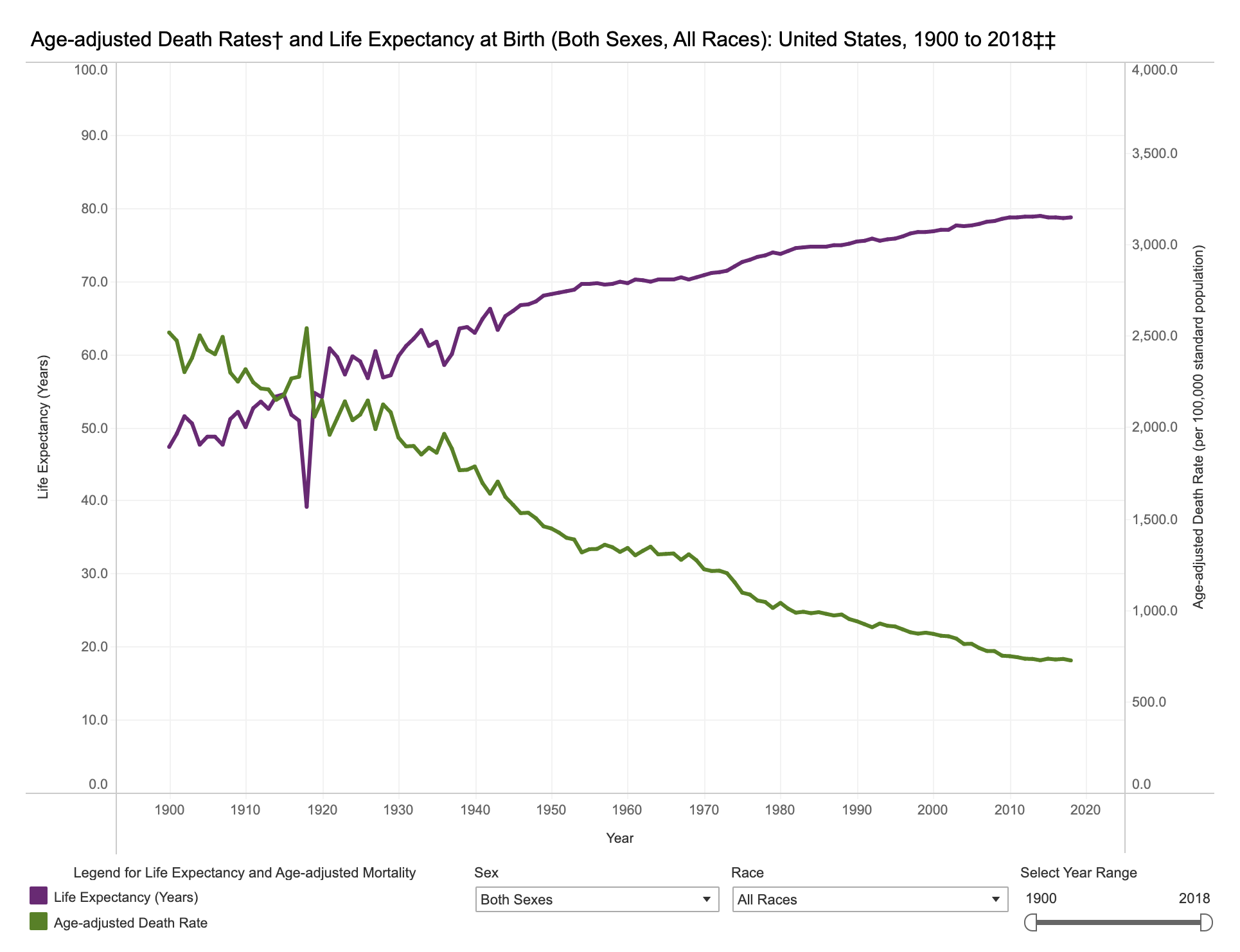In July 2021, several news outlets made the assertion that life expectancy in the United States had dropped by 1.5 years between 2019 and 2020, in large part due to the effects of the COVID-19 pandemic, and that, remarkably, this was the largest year-over-year decline in life expectancy since World War II.
For example, on July 21 CBS News published an article with the headline "U.S. Life Expectancy Took 'Catastrophic' Hit Last Year, Biggest Since WWII," which stated that: "U.S. life expectancy fell by a year-and-a-half in 2020, the largest one-year decline since World War II, public health officials said Wednesday."
Similar articles, each containing the "World War II" claim, were published by the New York Post, CNBC, and NPR.
Those claims were accurate.
According to data published by the federal U.S. Centers for Disease Control and Prevention (CDC), the estimated life expectancy in 2020 was 77.3 years. In 2019, it was 78.8 years — a year-over-year decline of 1.5 years.
Based on historical CDC data, the last time U.S. life expectancy dropped by that much or more in one year was indeed during World War II, when life expectancy fell from 66.2 years in 1942, to 63.3 years in 1943 — a decline of 2.9 years. As such, we are issuing a rating of "True."
Life Expectancy in 2020
The most recent authoritative information on life expectancy in the U.S. can be found in the "Provisional Life Expectancy Estimates for 2020," which were published on July 21, 2021, by the National Center for Health Statistics (NCHS), and can be read in full here. It stated that:
In 2020, life expectancy at birth for the total U.S. population was 77.3 years, declining by 1.5 years from 78.8 in 2019. Life expectancy at birth for males was 74.5 years in 2020, representing a decline of 1.8 years from 76.3 years in 2019. For females, life expectancy declined to 80.2 years, decreasing 1.2 years from 81.4 years in 2019.
Accord to the NCHS, that sharp decline in overall life expectancy at birth was largely attributable to the COVID-19 pandemic which, according to the CDC, killed almost 370,000 people in the U.S., and infected more than 20 million individuals, in 2020 alone. The report explained:
The decline of 1.5 years in life expectancy between 2019 and 2020 was primarily due to increases in mortality due to COVID-19 (73.8% of the negative contribution), unintentional injuries (11.2%), homicide (3.1%), diabetes (2.5%), and Chronic liver disease and cirrhosis (2.3%).
Life Expectancy Trends Since World War II
The assertion that the decline in life expectancy between 2019 and 2020 was the biggest since World War II did not appear in the July 2021 estimates, but news outlets appear to have based it on remarks made by Elizabeth Arias, the lead author of the report, in a February 2021 podcast.
Back in February, the CDC took the unusual step of publishing life expectancy estimates for the first six months of the previous year (2020). At that time, the data suggested a decline of one year between 2019 and 2020, a figure that was revised upwards to 1.5 years in July, when the data for the full year of 2020 were released. Placing the sharp decline in life expectancy in historical context, Arias said:
The decline in life expectancy that we saw for 2020 is the highest decline that we have seen, not since the pandemic, but since the Second World War when life expectancy declined 2.9 years between 1942 and 1943.
Arias' assessment was accurate both at the time she made it, when the decline in life expectancy was estimated to be one year, and in July 2021, when that decline was estimated to be 1.5 years.
A useful visualization of life expectancy trends between 1900 and 2018 can be found on the NCHS website. It shows that, since World War II, life expectancy in the U.S. has steadily increased, with a handful of small annual declines here and there:
A comprehensive breakdown of life expectancy every year between 1900 and 2020 can be found here. It shows that in 1943, life expectancy (63.3 years) dropped by 2.9 years from 1942 (66.2 years). From that time until 2019, life expectancy experienced a year-over-year decline on only 10 occasions, with the biggest drop being 0.3 years, in 1968 and 1993.
The estimated decline of 1.5 years between 2019 and 2020 was therefore the biggest annual decline in life expectancy in the past 77 years, by a considerable distance.
The biggest single annual decline in life expectancy in the last 120 years came in 1918, when it fell from 50.9 years, in 1917, to 39.1 years — a decline of 11.8 years. In 1918, the flu pandemic caused almost 500,000 deaths in the U.S. alone.


